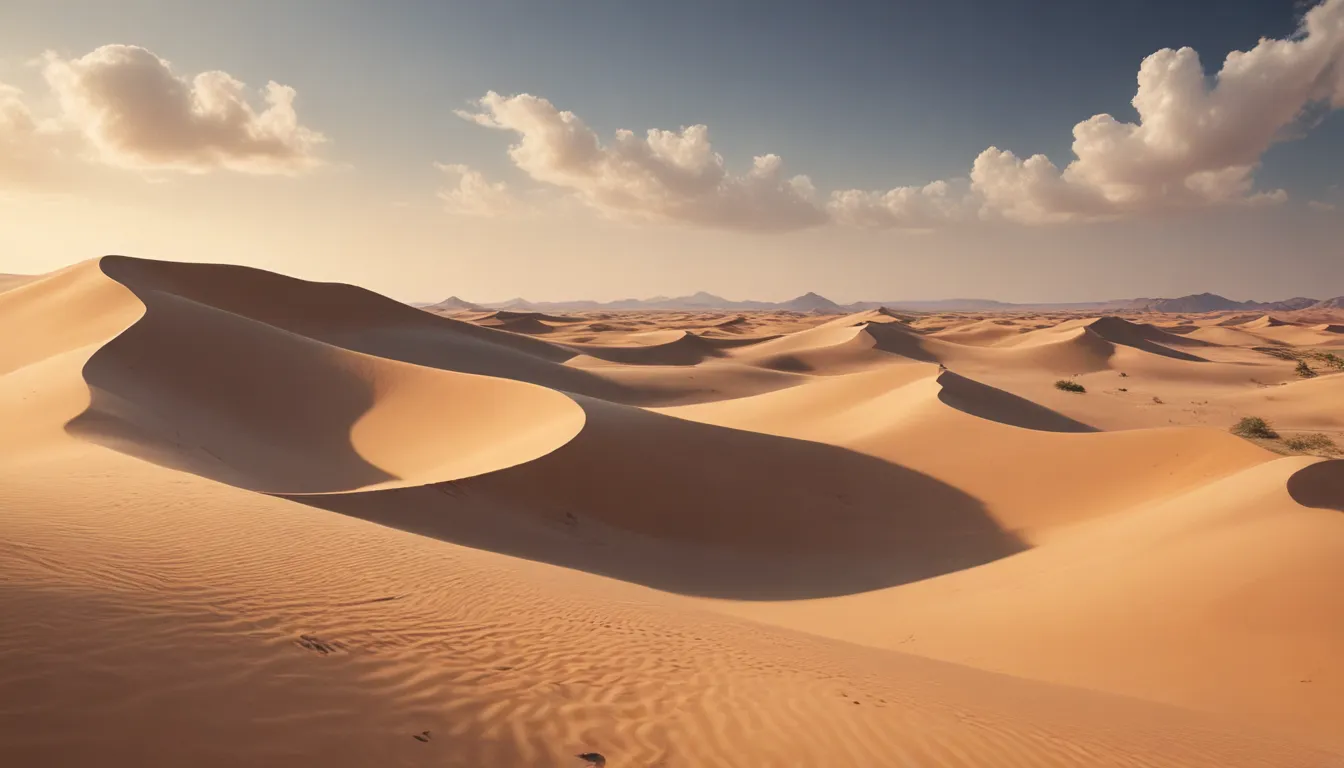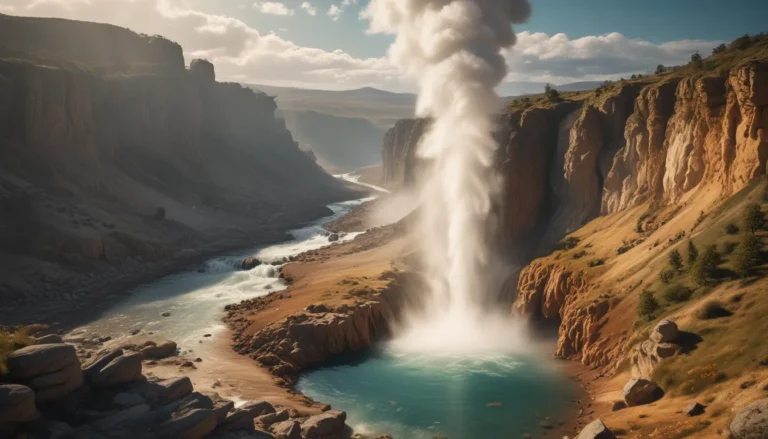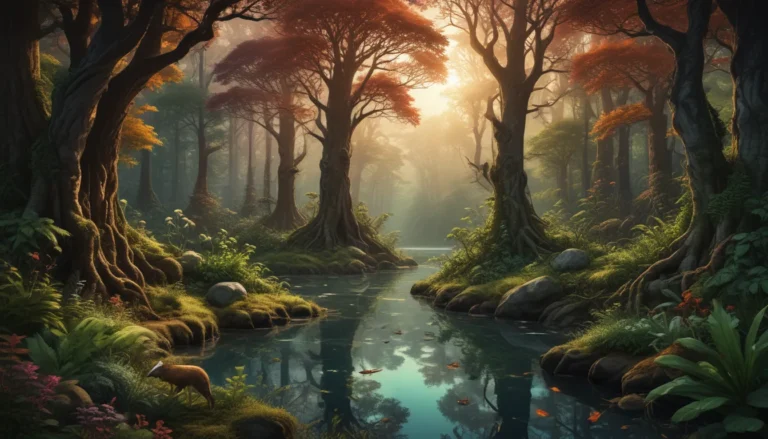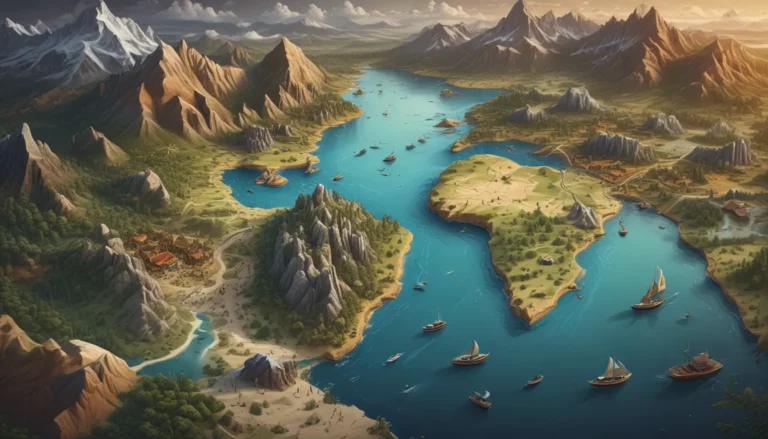A Note About Images: The images used in our articles are for illustration purposes only and may not exactly match the content. They are meant to engage readers, but the text should be relied upon for accurate information.
Sand dunes are not just piles of sand – they come in various shapes and sizes, move and change shape, and even produce a booming sound when you walk on them! In this article, we will delve into the enchanting world of sand dunes and uncover 18 astonishing facts that will leave you awestruck. From their formation to their ecological importance, sand dunes are truly remarkable natural formations that captivate researchers and visitors alike.
The Diverse Shapes and Sizes of Sand Dunes
Sand dunes can take on a variety of forms, from crescent-shaped barchan dunes to long linear ridges known as seif dunes. These towering structures can range in height from just a few meters to towering hundreds of meters above the ground, showcasing the dynamic nature of these ever-changing landscapes.
The Formation of Sand Dunes by Wind or Water
Wind and water are the primary agents responsible for shaping sand dunes. In arid regions, wind-blown grains of sand accumulate to form dunes, while in coastal areas, tides and currents play a role in their formation. The constant action of wind leads to the shifting and changing shape of sand dunes through a process known as dune migration.
The Mystery of Underwater Sand Dunes
Surprisingly, sand dunes can also form underwater in environments such as rivers and the ocean floor. These submerged dunes play a crucial role in shaping the underwater landscape and are a testament to the versatility and adaptability of these extraordinary formations.
The Magnificent Bilutu Peak in the Badain Jaran Desert
The Badain Jaran Desert in China is home to the largest sand dune in the world, known as the Bilutu Peak. This towering dune reaches a height of approximately 500 meters, making it a breathtaking sight to behold and a testament to the awe-inspiring power of nature.
The Surprising Ecosystems of Sand Dunes
Despite their harsh conditions, sand dunes are home to a surprising variety of plants and animals that have adapted to thrive in these extreme environments. These unique ecosystems showcase the resilience and diversity of life found within the sandy slopes of sand dunes.
The Enchanting Phenomenon of Booming Sand
In certain conditions, walking on a sand dune can produce a low-frequency sound known as the “booming” or “singing” sand phenomenon. This fascinating auditory experience adds another layer of intrigue to the already captivating world of sand dunes.
The Sahara Desert’s Iconic Sand Dunes
The Sahara Desert in Africa is renowned for its vast expanse of sand and iconic dunes. From the towering dunes of Erg Chebbi to the mesmerizing Erg Chigaga, these majestic structures offer a glimpse into the mesmerizing beauty of the desert landscape.
The Cinematic Appeal of Sand Dunes
Sand dunes have served as backdrop locations for numerous films and television shows due to their unique and picturesque qualities. From the Sahara Desert scenes in “Lawrence of Arabia” to the iconic “Star Wars” series, sand dunes have captured the imagination of audiences worldwide.
The Archaeological Treasures of Sand Dunes
Over time, sand dunes can bury ancient structures and artifacts, only to reveal them when the dunes shift or erode. These archaeological treasures provide valuable insights into the past and serve as a reminder of the rich history that lies beneath the sandy surface of sand dunes.
The Coastal Protection Role of Sand Dunes
Sand dunes act as natural barriers against coastal erosion and storm surges, protecting the land behind them from the destructive power of the ocean. Their accumulation of sand serves as a vital defense mechanism for coastal areas around the world.
The Vibrant Colors of Sand Dunes
Certain sand dunes exhibit unique colors due to the presence of different minerals and sediments. From red and orange hues to pink and even white shades, the vibrant colors of sand dunes add to their visual appeal and showcase the diversity of these natural wonders.
The Otherworldly Presence of Sand Dunes on Planets and Moons
Sand dunes are not exclusive to Earth – they have been detected on other planets and moons, such as Mars and Saturn’s moon, Titan. This interplanetary presence highlights the universal nature of sand dunes and their role in shaping diverse planetary landscapes.
Monitoring Sand Dune Movement Through Satellite Imagery
Advancements in satellite technology have enabled scientists to monitor and measure the movement of sand dunes from space. This valuable data helps researchers better understand the dynamics of dune systems and the factors that influence their ever-evolving nature.
The Impact of Sand Dunes on Weather Patterns
Large sand dunes can influence local weather patterns by altering wind flow and creating areas of increased turbulence. Their presence can have far-reaching effects on the surrounding environment, showcasing the interconnectedness of natural systems.
The Revealing Nature of Sand Dunes’ Alignment
The shape and alignment of sand dunes can provide valuable information about the prevailing wind direction in a specific region. By studying the patterns of sand dunes, researchers can gain insights into historical weather patterns and environmental dynamics.
The Enduring Evolution of Sand Dunes
Sand dunes are dynamic landforms that are constantly shaped by natural elements such as wind, water, and vegetation. They serve as a reminder of the ever-changing nature of our planet and the intricate processes that shape its diverse landscapes.
Wrapping Up the Tale of Sand Dunes
Sand dunes are not just geological formations – they are intricate ecosystems, cinematic backdrops, and archaeological treasures. Understanding the formation and characteristics of sand dunes can deepen our appreciation for the natural world and the processes that shape it. Whether exploring the towering dunes of the Sahara or marveling at the vibrant colors of coastal dunes, sand dunes offer a window into the wondrous complexities of our planet.
FAQs About Sand Dunes
-
How are sand dunes formed?
Sand dunes are formed when wind or water carries sand particles and deposits them in a specific location, where they are shaped by environmental factors over time. -
Where are sand dunes found?
Sand dunes can be found in deserts, coastal areas, riverbeds, and mountainous regions, wherever there is an ample supply of sand and the right conditions for their formation. -
Can sand dunes move?
Yes, sand dunes are constantly in motion, migrating over time due to prevailing wind patterns and other factors that influence their shape and location. -
Do sand dunes have ecological importance?
Sand dunes play a crucial role in supporting unique ecosystems, providing habitats for specialized plant and animal species and acting as natural barriers against coastal erosion. -
Are sand dunes stable structures?
While they may appear stable, sand dunes are dynamic formations that change shape and size over time due to environmental factors. Stabilization efforts can help slow down their movement and erosion. -
Can you climb sand dunes?
Climbing sand dunes can be a fun experience, but it’s essential to do so responsibly to minimize impact on the fragile dune ecosystem and its inhabitants. -
Are there famous sand dunes around the world?
Yes, there are several famous sand dunes, including those in the Sahara Desert, the Namib Desert, and Great Sand Dunes National Park. -
What recreational activities can you enjoy on sand dunes?
Sand dunes offer a range of recreational activities such as sandboarding, sand sledding, dune buggy rides, and camel rides, allowing visitors to enjoy the beauty and adventure of these natural wonders.
Let your curiosity guide you through the awe-inspiring realm of sand dunes, where each fact reveals a new layer of wonder and intrigue. Explore the vibrant colors, dynamic shapes, and ecological importance of these mesmerizing landscapes as you embark on a thrilling journey through the sands of time. Sand dunes have a story to tell – one that spans centuries and connects us to the ever-changing beauty of our Earth. Dive into the world of sand dunes and experience the magic that lies beneath their sandy surface.





